Apple Announces 5nm A14 SoC - Meagre Upgrades, Or Just Less Power Hungry?
by Andrei Frumusanu on September 15, 2020 4:30 PM EST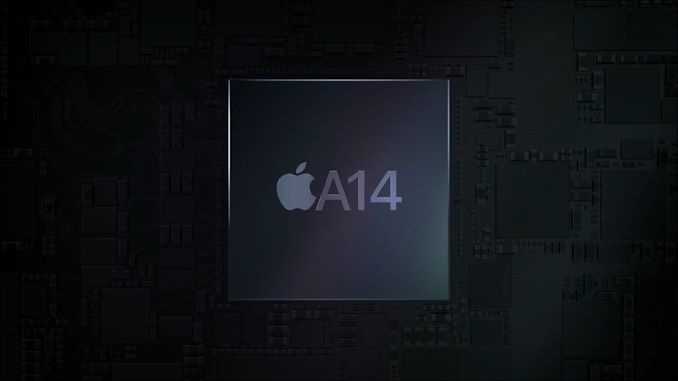
Amongst the new iPad and Watch devices released today, Apple made news in releasing the new A14 SoC chip. Apple’s newest generation silicon design is noteworthy in that is the industry’s first commercial chip to be manufactured on a 5nm process node, marking this the first of a new generation of designs that are expected to significantly push the envelope in the semiconductor space.
Apple’s event disclosures this year were a bit confusing as the company was comparing the new A14 metrics against the A12, given that’s what the previous generation iPad Air had been using until now – we’ll need to add some proper context behind the figures to extrapolate what this means.
On the CPU side of things, Apple is using new generation large performance cores as well as new small power efficient cores, but remains in a 2+4 configuration. Apple here claims a 40% performance boost on the part of the CPUs, although the company doesn’t specify exactly what this metric refers to – is it single-threaded performance? Is it multi-threaded performance? Is it for the large or the small cores?
What we do know though is that it’s in reference to the A12 chipset, and the A13 already had claimed a 20% boost over that generation. Simple arithmetic thus dictates that the A14 would be roughly 16% faster than the A13 if Apple’s performance metric measurements are consistent between generations.
On the GPU side, we also see a similar calculation as Apple claims a 30% performance boost compared to the A12 generation thanks to the new 4-core GPU in the A14. Normalising this against the A13 this would mean only an 8.3% performance boost which is actually quite meagre.
In other areas, Apple is boasting more significant performance jumps such as the new 16-core neural engine which now sports up to 11TOPs inferencing throughput, which is over double the 5TOPs of the A12 and 83% more than the estimated 6TOPs of the A13 neural engine.
Apple does advertise a new image signal processor amongst new features of the SoC, but otherwise the performance metrics (aside from the neural engine) seem rather conservative given the fact that the new chip is boasting 11.8 billion transistors, a 38% generational increase over the A13’s 8.5bn figures.
The one explanation and theory I have is that Apple might have finally pulled back on their excessive peak power draw at the maximum performance states of the CPUs and GPUs, and thus peak performance wouldn’t have seen such a large jump this generation, but favour more sustainable thermal figures.
Apple’s A12 and A13 chips were large performance upgrades both on the side of the CPU and GPU, however one criticism I had made of the company’s designs is that they both increased the power draw beyond what was usually sustainable in a mobile thermal envelope. This meant that while the designs had amazing peak performance figures, the chips were unable to sustain them for prolonged periods beyond 2-3 minutes. Keeping that in mind, the devices throttled to performance levels that were still ahead of the competition, leaving Apple in a leadership position in terms of efficiency.
What speaks against such a theory is that Apple made no mention at all of concrete power or power efficiency improvements this generation, which is rather very unusual given they’ve traditionally always made a remark on this aspect of the new A-series designs.
We’ll just have to wait and see if this is indicative of the actual products not having improved in this regard, of it’s just an omission and side-effect of the new more streamlined presentation style of the event.
Whatever the performance and efficiency figures are, what Apple can boast about is having the industry’s first ever 5nm silicon design. The new TSMC-fabricated A14 thus represents the cutting-edge of semiconductor technology today, and Apple made sure to mention this during the presentation.
Related Reading:
- The Apple iPhone 11, 11 Pro & 11 Pro Max Review: Performance, Battery, & Camera Elevated
- The Samsung Galaxy S20+, S20 Ultra Exynos & Snapdragon Review: Megalomania Devices
- TSMC Expects 5nm to be 11% of 2020 Wafer Production (sub 16nm)
- ‘Better Yield on 5nm than 7nm’: TSMC Update on Defect Rates for N5


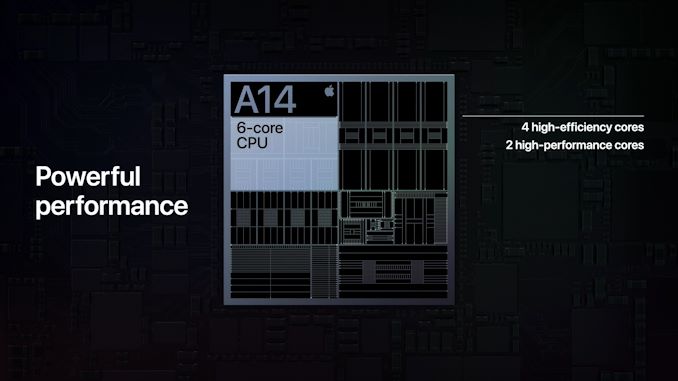
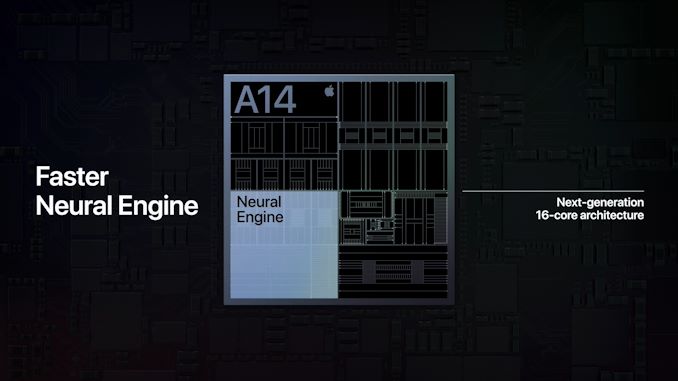
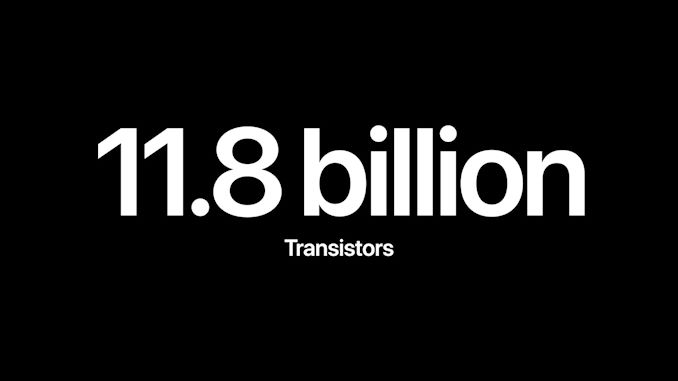
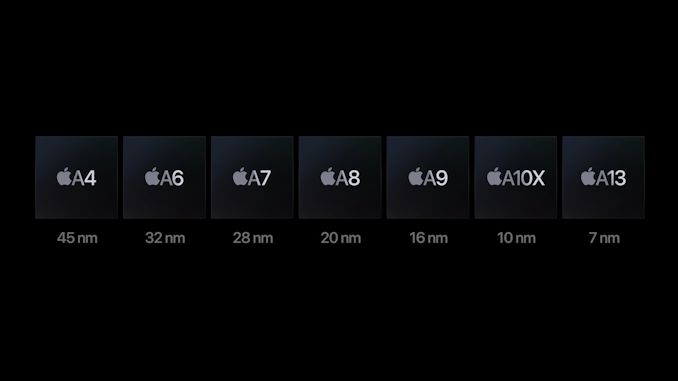








127 Comments
View All Comments
SydneyBlue120d - Wednesday, September 16, 2020 - link
No AV1 support at all?!?!Gondalf - Wednesday, September 16, 2020 - link
From an half node can we expect more?? This 5nm is more like a 6nm in the best case.At this point better stay on 7nm cutting down costs, if possible.
If 3nm and 2nm will are the same, upcoming years will are a little boring. We have to remember that on high power SKUs these numbers will are even lower.
Jaianiesh03 - Wednesday, September 16, 2020 - link
I don't think we should rush to conclusions just yet anyway. Apple's performance figures don't make sense to me because their a12 performance figures for the regular iPad were also wrong. They claimed 40% performance from a12 to a10 whereas in the context of their own figures from the iphone launches (X and Xs) 1.15x1.25=44%. I believe apple just added 25+15=40 for the a12 in the ipad. Similarly here they just added 20(A13)+20=40 for the iPad air. We should expect at least 20 percent improvement announcement over the A13 in their iPhone 12 keynote. We also have to keep in mind that they claimed 15% for the A12 which turned out out to be 20% in Geekbench 5 and 25% in spec2006. Do you think that maybe the reason @Andreif7tipoo - Monday, September 21, 2020 - link
Maybe they move to harder internal tests each generation at the same time, like the battery life claim changed over timeTorrijos - Wednesday, September 16, 2020 - link
I think they reach the stage where they are on the TOP of CPU/GPU performance for mobile platform, and increased efficiency and dedicated circuits for ML photo and Video processing.This chip will probably be used in the next iPhones (where they will explain all those specifics new components) and also the AppleTV I Imagine cementing a reference point for performance for iOS apps for the next few years (for Apple Arcade for exemple).
We will see soon enough when the iPhones are presented.
Speedfriend - Wednesday, September 16, 2020 - link
Is this the first time that a leading edge SoC has gone into an iPad as they are usually reserved for iPhones? Given how constrained capacity would have been at 5nm, I find it strange it has been used for the Air. Perhaps expected demand for the iPhone is way below what it was when capacity was booked.Also surely this chip will not be used in any Mac product? With Tiger lake coming out, Apple is gong to really have to pull one out of the hat to compete
Zoolook - Wednesday, September 16, 2020 - link
I doubt the capacity of 5nm is constrained, all of the planned Huawei wafer starts were up in the air just a few months ago, AMD is not on 5nm yet, so Apple and Qualcomm prob fought it out over those wafer starts and now has more capacity than they planned for in the beginning of the year.Speedfriend - Wednesday, September 16, 2020 - link
No Huawei was still reported to be getting its 5nm chips fabricated up until yesterday and had even tried to get additional capacity when the ban was announced 3 months ago. 5nm would have been very tight.Despite everyone calling for a big 5G replacement cycle for the iPhone now, 5G just doesn't offer that much to consumer yet in most places above what 4G provides, so that may be reflected in underlying orders from operators having seen poor demand for other 5G phones.
Zoolook - Wednesday, September 16, 2020 - link
The wafers that has been produced sofar (since mid Q2) was planned atleast a year ago, Apple had first call on wafer capacity up to a certain percentage, so they should have been getting what they ordered, and yield has been reported to be better than expected.From now there are extra wafer starts to divide between Qcom and Apple so they definitely have the opportunity to have more chips than they planned for last year produced this year.
huangcjz - Monday, September 21, 2020 - link
The A5 went into the iPad 2 in March 2011 before the iPhone 4S in October 2011, I think. I can't remember if there are any other examples.